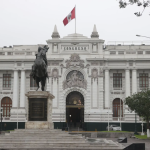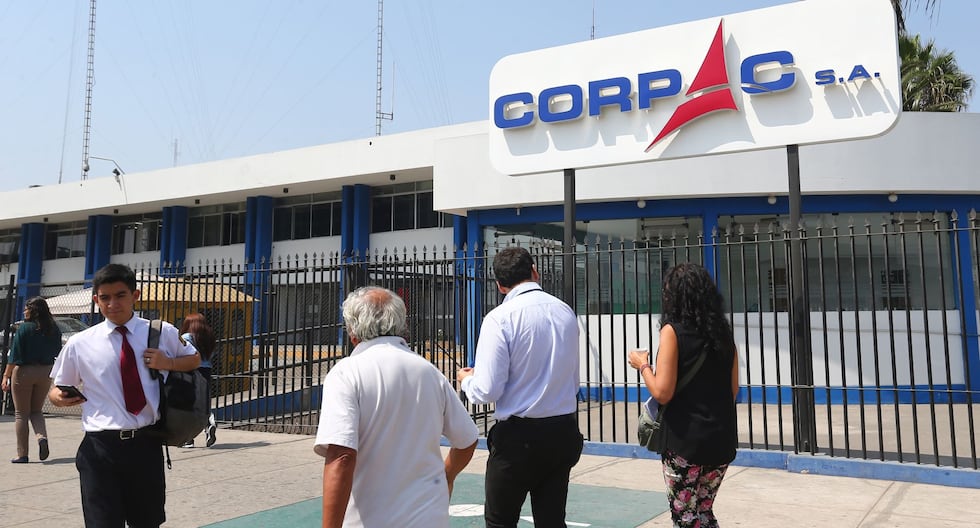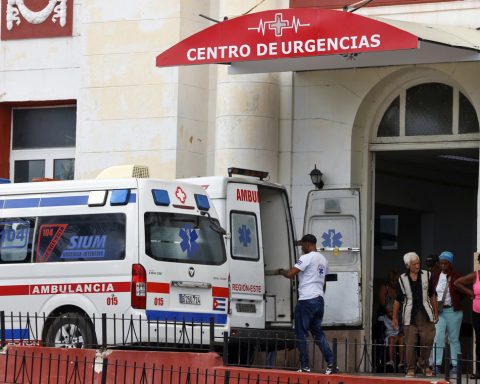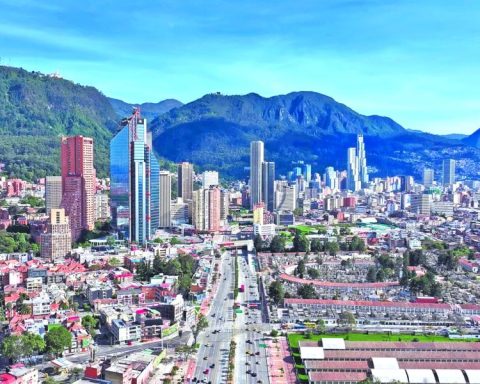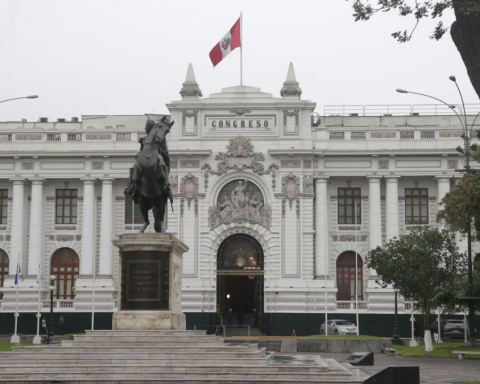The Dominican Republic is a benchmark of success in the tourism sector of Latin America and the Caribbean. This is how he highlighted it Gustavo Viescasgeneral manager for Latin America and the Caribbean of Wyndhamduring the panel “Dominican Republic: Driving Growth and Innovation”, held within the framework of the annual regional conference Beyond, organized by Wyndham Hotels & Resorts in Punta Cana.
The event was held at the Hotel Grand Palladium Punta Canaand prominent leaders of the tourism sectorsuch as Edward De Valle II of GDV SRL, Marcial Smester, representing the Dominican government; Carlos Ruiz, from Advanced Funds; María Teresa Ferrerio from Bandex and Rafael “Papo” Blanco from Viva Resorts.
The impact of tourism in the development
In recent years the tourism has been one of the main drivers of economic growth in the Dominican Republic.
The eastern region, which historically was one of the most impoverished in the country, is now a clear example of development, thanks to the infrastructure investments tour. Areas like Miches are emerging as important development poles, following the Bávaro model.
The impact of this expansion has been evident in the creation of thousands of direct jobs and indirect and in the diversification of the dominican economy. Hotel projects are transforming both the region and other parts of the country, turning the tourism a fundamental pillar of national growth.
Expansion of the hotel sector
According to Viescas, the Dominican Republic has experienced a exponential growth that is not seen in other countries in the region. Wyndham Hotels & Resorts, for example, has more than 100 signed hotels in Latin America and the Caribbean, of which 25 are in the Dominican Republic. This represents 25% of the chain’s expansion in the region.
“Despite Mexico, Brazil and Argentina They have a larger presence in terms of number of hotels, what is happening here is truly remarkable. In terms of roomsFor example, the impact on Dominican Republic It is remarkable. Only in Miches, with its 538 roomsand in Santana, with 620 roomswe are seeing significant investments“added Viescas.
The key to the success of tourism
One of the elements most highlighted by the panelists was the human quality of the Dominicans.
Nigel La Chapelle, president of WTH and BIO Investment Group, said: “Having worked in several countries, I can say with certainty that the human value of Dominicans is one of the keys to success. “The warmth, professionalism and commitment of the people here allow these projects to come to fruition.”
The importance of a trained staff and committed is crucial to the success of any project in the tourism sector. Without the dedication of Dominicans, the expansion of the industry would be very difficult.
Rafael “Papo” Blanco also highlighted that, despite the deficit of more than 20,000 trained employees In the hotel sector, active work is being done to train the next generation of professionals.
Training initiatives in the tourism
The development of tourism sector requires an increase in workforce training. In this sense, training and training programs have been implemented in collaboration with institutions such as Infotepbenefiting more than 700 people who are preparing to take positions in new hotels.
These programs not only cover the aspects technicians of the sector, but also focus on the culture and standards of each hotel chain, which guarantees a quality experience for tourists.
The commitment of tourism entrepreneurs is evident. In one of the most recent projects, the hiring of 550 employees is planned, of which 400 will work in construction and 80 in operational areas of the hotel. These initiatives reflect the commitment to local development and the use of dominican talent.
RD: a attractive destination for tourism investments
For exhibitors, the combination of factors that make the Dominican Republic such an attractive destination for tourism investments It is unique. Political stability, macroeconomic strength and support from both the private and public sectors are elements that contribute to the sustained growth of the tourism sector.
Edward De Valle II, dedicated to hotel development Wyndham in the country, expressed: “For us, that is incredible, because we have seen great support, not only from the private sector, but also from the public sector,” highlighting the importance of public-private collaboration in it country development.
Industrialization: a key step towards modernization
One of the key topics discussed was construction industrialization hotel.
Nigel La Chapelle assures that instead of depending exclusively on labor on the ground, the idea of developing up to 80% of a project in specialized factories. This methodology improves quality, reduces costs and optimizes construction times.
The use of precast for elements such as slabs and columns not only facilitates construction, but also creates factory employment local. This offers new opportunities to train young Dominicans in the construction sector, an area where there is a deficit of specialized labor.
Commitment to the Environment and the Community
He tourism in the Dominican Republic not only seeks to generate employment and wealth, but also to ensure that development is sustainable both from an environmental and social point of view. Hotel chains such as Wyndham have adopted green practicessuch as the installation of solar panels, and have implemented waste reduction programs.
Furthermore, the tourism brings with it a “demonstration effect“, in which local communities adopt new cultures and ways of working.
An example of this is the influence of italian gastronomy in the Bayahibe area, where the population has learned to prepare pizzas and focaccias, a clear example of how the tourism enriches communities.
Challenges and opportunities in the tourism sector
Despite the notable success, there are still challenges that must be addressed to ensure the sustained growth of the sector. Among the main challenges mentioned by the panelists are:
- Infrastructure: although they have become important infrastructure investmentsthere are still shortcomings, especially in key areas such as wastewater treatmentwhich are essential for a tourism development sustainable.
- Electricity cost: The high cost of energy is an obstacle to competitiveness. It is necessary to foster a regulatory environment that allows competitive rates and support efficient energy generation.
- Information about domestic tourism: There is a lack of detailed information about the tourism national, which limits the use of the internal market, especially in areas like Miches, which has great potential in business tourism and family visits.
Who has driven the success of the tourism Dominican?
Rafael Blanco, who inaugurated the first Viva brand hotel in the Dominican Republic In 1987, he was questioned about the changes in the country as for the tourism development from that date to the present.
According to his intervention, the Dominican Republic has maintained continuity in the state policieswhich has been key to the success of the sector. “During the last 40 or 50 years, with different political parties, tourism policy has been constant,” said Blanco.
He added that the Dominican State has recognized for tourism as a strategic sector to diversify and grow the economy.
In this sense, a competitiveness law with a favorable tax scheme, a policy that has been maintained over time. This stability has given legal certainty and has allowed destiny Dominican Republic consolidates itself as one of the most dynamic in the entire Caribbean region.

The panelists agreed that the current conditions of the tourism in the Dominican Republic are a result of the active participation and joint public and private sectors.
“I think it’s a combination of everyone. The government has been key, the political stability that we have had in the last 40 years has been fundamental. But also the financial sector has played a very important role, supporting tourism projects with attractive conditions that are not found in other regions such as Central America or South America,” said Blanco.
Another of the points highlighted in the panel, which brought together more than 200 hoteliers from Central America and the Caribbean, was the role of international brandswhich have been fundamental in positioning the Dominican Republic like a attractive destination for investment.
Bandex and support for hotel projects
The hotel projects in the Dominican Republic They also have the support of Development Bank and Exports of the Dominican Republic (Bandex). As explained by María Teresa Ferrerio, representative of Bandex, the tourism sector is key to the development and country export.
“We especially focus on small projectslike city hotels, in areas that are not yet as developed. We also offer special conditionssuch as terms of up to 15 years and competitive rates, so that the projects are viable. In addition, we can offer a grace period for projects to breathe before starting to generate income,” he said.
In the Dominican Republic, Wyndham operates 16 hotels with more than 4,800 rooms in nine cities, through six recognized brands, such as Trademark Collection by Wyndham, Registry Collection and Ramada by Wyndham.
Additionally, Wyndham plans to open new projects in 2024, including Viva Miches by Wyndham and Wyndham Alltra Punta Cana, both all-inclusive resorts.
Currently, 70% of Wyndham hotels in the Dominican Republic are operational, and the company is working on significant expansion. “We have 25 signed contracts, some in the construction phase and others still in the pipeline. This means that we are going to double our presence in the country,” explained Viescas.
Wyndham’s presence is not limited only to traditional tourist destinations, such as beaches, but they are also opening hotels in cities such as Montecristi and Santo Domingo, showing their interest in attracting business customers.
Regarding the employment impact, it is estimated that for each room in a resort at least one direct job and four indirect jobs are generated.
This means that Wyndham is creating more than 4,000 direct jobs in the hospitality sector, and the impact is even greater when indirect jobs, such as suppliers and other services, are included.










